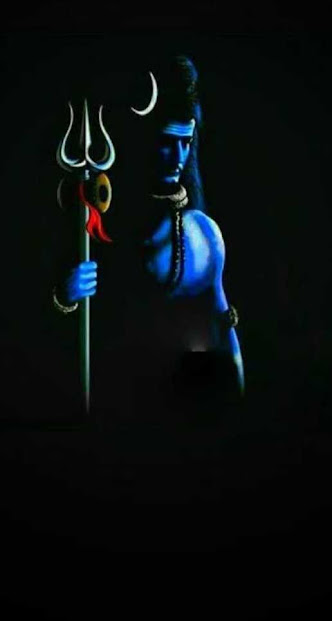Paramhansa Yogananda, India’s first global yoga ambassador
Yogananda advocated Kriya Yoga and started numerous Americans into it's anything but when yoga was as yet not hip
Yoga might be the in thing today in India as well as around the world. In any case, route back in 1920, when a youthful Paramahansa Yogananda arrived in the United States to spread Kriya Yoga and the sky is the limit from there, numerous Americans scoffed and snickered at him. Inside India, as well, yoga was viewed as fit for the yogis, not the everyday person.
While the facts really confirm that Swami Vivekananda, perhaps the main strict and otherworldly stars of India, took the Hindu religion to the US in 1893 and spent numerous years both in the US and England, Yogananda can be securely depicted as India's first yoga diplomat toward the West.
Lesser Known
Also, not at all like Vivekananda who accordingly got back to India and voyaged all over the nation lecturing the upsides of Hinduism and karma yoga, Yogananda consumed all his grown-up time on earth in the US, from 1920, at 27 years old, when he arrived there until 1952 when he endured a most strange passing. The sole exemption was a visit to India he made in 1932 when he showed Kriya Yoga to Mahatma Gandhi.
This is one reason, lamentably however, that Yogananda is moderately lesser known to the man in the city in India than Vivekananda. School course books allude to Vivekananda, and not Yogananda.
June 21, International Yoga Day, is an ideal event to honor a man who confronted and defeated the best of chances as he approached lecturing several thousands in the US – the two blacks and whites — Kriya Yoga, reflection, chakras and love for God. It's anything but when the word 'yoga' couldn't be perceived, at any rate outside India.
Four years before he died, Yogananda, brought into the world as Mukunda Lal Ghosh to a profoundly slanted couple in Gorakhpur, composed his notorious Autobiography of a Yogi, which before long achieved the status as outstanding amongst other otherworldly books of the twentieth century. It has sold large number of duplicates in a few dialects and shot endless people all throughout the planet to the universe of otherworldliness.
Excursion to US
Unexpectedly, Yogananda was brought into the world in 1893, the very year Vivekananda took the roar at the World's Parliament of Religions in Chicago. The fourth of eight kids, he was a scholastically helpless understudy in school and school. By then, at that point, he had met his master, Swami Yukteshwar Giri, who painstakingly shaped the profound wonder into an otherworldly monster. It was he who sent Yogananda to the US to lecture India's old otherworldly shrewdness.
Going to the US was generally simple. Be that as it may, spreading the ideals of yoga required massive commitment and difficult work. Yogananda's skin tone, long hair and turban welcomed deride and even maltreatment in the city. Christian evangelists were especially against him. However, in his collection of memoirs, Yogananda makes no notice of how he needed to work to make yoga well known in the US.
American creator Philip Goldberg says that Yogananda was an uncommon individual who perceived his natural forces and his life's motivation at a beginning stage. This is presumably why "he suffered scoffs, glares, stone tossing and verbally abusing (snake charmer was one)" however apathetically kept up his poise. He may have perused funny cartoons Blondie and Bringing Up Father when focused, yet fundamentally he was a genuine man with a solitary mission, a decided, trained and requesting dynamo, who now and again rested just three or four hours every evening.
Yogananda's sole point was to spread otherworldliness. He made his yoga lessons simpler for Westerners to get a handle on. It helped that he had "yoga" in his name! As indicated by Goldberg, "he followed God like Sherlock Holmes followed hoodlums". The American media considered him a "Hindu intellectual", "soothsayer" and "clinician". Sorting out a multi-city address visit isn't simple even today. Goldberg appropriately asks: "Envision what it probably involved in a time of coin-worked telephone stalls, significant distance administrators, wires and letter composing."
Charming Spiritually Hungry
However, likened to what Adi Shankara did in a former period, Yogananda circumvented the rambling US, charming profoundly hungry crowds, openly combining Jesus in Hindu lessons. The reaction was tremendous. The urban communities he visited were not a couple: New York, San Francisco, New Jersey, Los Angeles, Cleveland, Seattle, Oregon, San Diego, Portland, Oakland, Berkeley, Pittsburgh, Detroit… Halls where he addressed were pressed; on occasion, many remained as there was no spot to sit.
His lessons were normal and he regarded the Judeo-Christian custom. He started exactly 1,00,000 Americans into yoga. He brought up the fundamental solidarity of every incredible sacred writing, and endeavored to unite the West and East on a profound establishment. He asked everybody to look for God, whatever their religion. The Los Angeles Times before long named him "the twentieth century's first genius master".
Yogananda's end arrived in a most emotional way on March 7, 1952, in Biltmore Hotel in Los Angeles during a meal out of appreciation for the Indian Ambassador to the US, Binay Ranjan Sen. Yogananda finished his discourse, which ended up being his last, saying: "I'm glad I was brought into the world in India… where Ganges, woods, Himalayan caverns, and men dream God." after a second, he lifted his eyes and slid to the floor with a blissful grin all over. The yoga master had achieved 'mahasamadhi'. Medicinally, the end was ascribed to cardiovascular breakdown.
The Indian government has threefold regarded Yogananda. It's anything but a postage stamp in 1977. It was trailed by a 2017 stamp checking 100 years of the ashram he set up in Ranchi. In 2019, a dedicatory coin of Rs 125 group was given to stamp his 125th birth commemoration.




Comments
Post a Comment